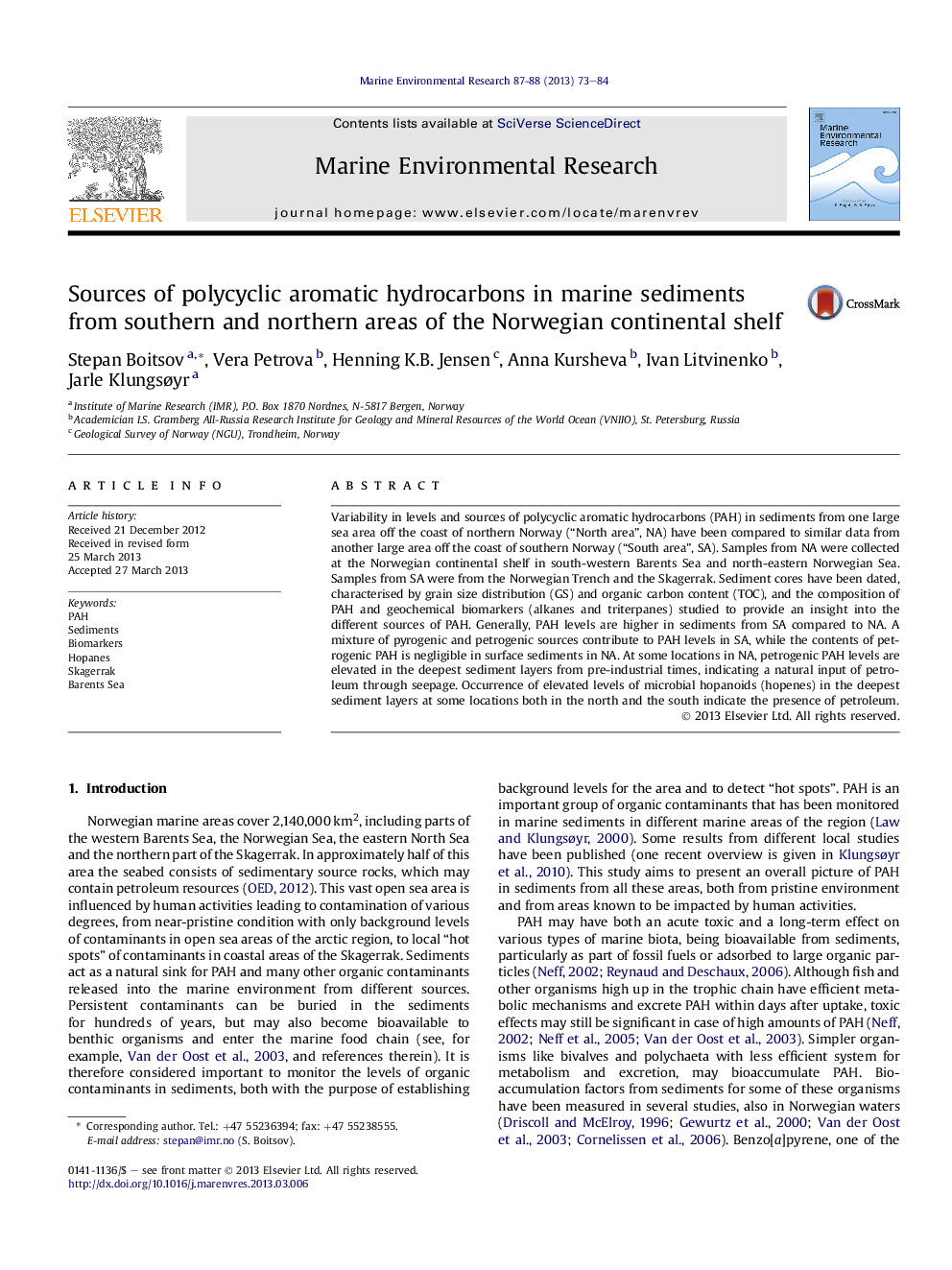| Article ID | Journal | Published Year | Pages | File Type |
|---|---|---|---|---|
| 4550915 | Marine Environmental Research | 2013 | 12 Pages |
•We study PAH and hopanes in sediments from 2 large areas on the Norwegian shelf.•Pristine areas of the Barents Sea have lower levels of PAH than the Skagerrak.•Inputs of pyrogenic PAH increase in the modern sediments in both studied areas.•A mixture of sources contribute to the sediments in the Skagerrak.•Petrogenic inputs are apparent in deep sediments, as confirmed by biomarker study.
Variability in levels and sources of polycyclic aromatic hydrocarbons (PAH) in sediments from one large sea area off the coast of northern Norway (“North area”, NA) have been compared to similar data from another large area off the coast of southern Norway (“South area”, SA). Samples from NA were collected at the Norwegian continental shelf in south-western Barents Sea and north-eastern Norwegian Sea. Samples from SA were from the Norwegian Trench and the Skagerrak. Sediment cores have been dated, characterised by grain size distribution (GS) and organic carbon content (TOC), and the composition of PAH and geochemical biomarkers (alkanes and triterpanes) studied to provide an insight into the different sources of PAH. Generally, PAH levels are higher in sediments from SA compared to NA. A mixture of pyrogenic and petrogenic sources contribute to PAH levels in SA, while the contents of petrogenic PAH is negligible in surface sediments in NA. At some locations in NA, petrogenic PAH levels are elevated in the deepest sediment layers from pre-industrial times, indicating a natural input of petroleum through seepage. Occurrence of elevated levels of microbial hopanoids (hopenes) in the deepest sediment layers at some locations both in the north and the south indicate the presence of petroleum.
